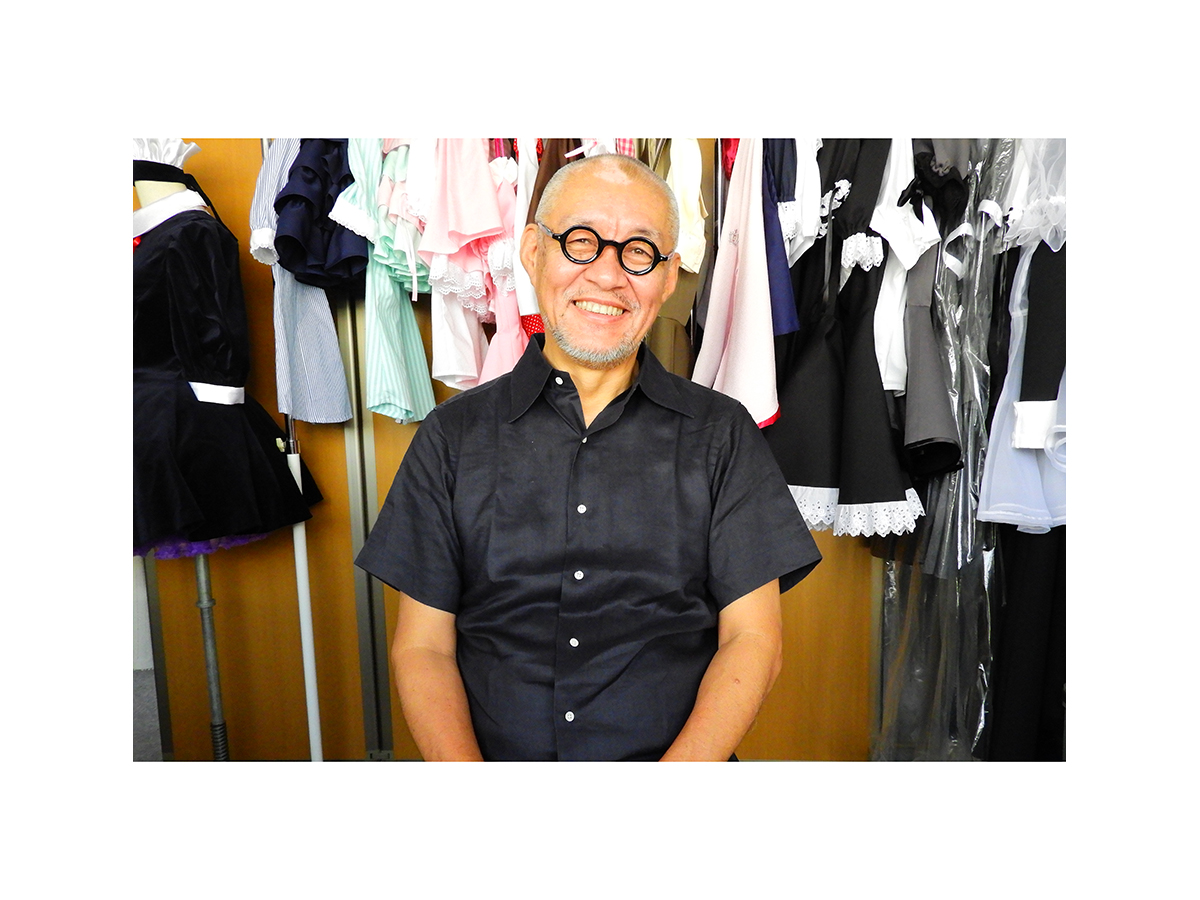
Photo by © grape Japan, clothing designed by Masaaki Shiozawa for © Candy Fruit
Interview with Masaaki Shiozawa: The “Founding Father” of Maid Clothes
- Tags:
- Candy Fruit / Designer / Fashion / Kawaii / Maid / Maid Cafe / Maid Cafes / maid clothes / Maids / Masaaki Shiozawa
Related Article
-

Get Gear Featuring Namco Bandai, Nintendo & Cave Games at Video Game Tokyo Pop Up Store
-
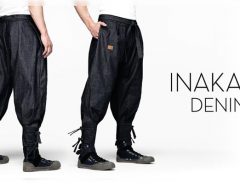
Traditional Japanese Worker Pants Get A Denim Samurai Makeover
-
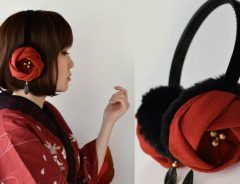
Japanese Maker Uses Age-Old Craft For Elegant Earmuffs To Pair With Kimono
-
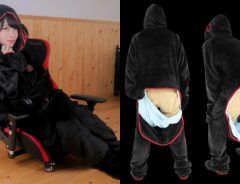
Japanese Video Game Onesie For Lazy Gamers Is Equipped For Every Situation
-
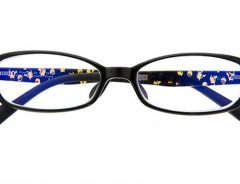
Increase Your Catch Rate With These Classy Pokémon Glasses
-

The Force Bridges Traditional And Casual With Star Wars Themed Japanese Summer Wear


Even visitors who don't necessarily identify themselves as fans of Japanese games, anime or idols are probably aware of the Japanese phenomenon known as the "maid café." Originally only a niche experience available in the Akihabara neighborhood of Tokyo, maid cafes can now be found in almost all major cities of Japan and they are increasingly included on foreign tourists' list of things to do when they visit the country.
The iconic clothes which maids wear have also taken on a life outside of the cafés as cosplay and costume items. In fact, maid outfits (usually generic with a lace apron skirt and headband) can easily be found in the costume sections of general stores like Don Quijote.
However, very few people know that maid clothes, which have flourished throughout the last twenty years across a broad spectrum of styles and patterns, largely owes its existence as a fashion genre to the efforts of one man: Masaaki Shiozawa 塩澤政明.
We had an opportunity to sit down with Mr. Shiozawa in his Tokyo office to ask him about the origins of maid clothes in Japan, his design work not only for maid cafés but also for idol groups, and how his maid clothes have evolved over the last two decades.
Although Mr. Shiozawa also has other brands and projects unrelated to maid clothes, our interview is primarily focused on his contribution to the maid clothes fashion genre. For examples of his other work, please see the links at the bottom of this article.
Photo by © grape Japan, clothing designed by Masaaki Shiozawa for © Candy Fruit
From catalog sales to starting up a company
grape Japan (gJ): Mr. Shiozawa, thank you for agreeing to this interview. To start, I’d like to ask you how you got involved in fashion.
Masaaki Shiozawa (MS): I had polio as a child so I was weaker than most, but since my grades in art and music were good, already from elementary school I was wondering if there was a related job I could do when I grew up. And then in middle and high school, I began to realize that men could also be designers. After graduating from high school, I worked in a fruit and vegetable market during the day and I went to the Bunka Fashion College in Shinjuku at night. I spent three years there learning the basics of fashion, then I went to the Otsuka Kimono Textile Training School to study textiles. Through the contacts I made there, I found work in the apparel industry, which is where I stayed for several decades.
gJ: So then, how did you get involved with maid clothes?
MS: Well, someone I knew was making maid clothes as a hobby. He was probably the first one to set up a company and make a proper business of it. I understood that setting up a production line of original products would be the key to expanding such a business. That’s when I met my business partner, Tetsuya Ono, and we decided to start up a company.
gJ: Would that company be Candy Fruit?
MS: Yes, but before we set up the company in 2000, we started out doing catalog-based sales, focusing on nurse clothes and maid clothes and one other design, all three of them originals. We did that for about two years before we launched as a company.
gJ: So that means you started selling maid clothes in 1998, the same year that the temporary Pia Carrot Restaurant opened in Akihabara, the first maid café.
MS: That’s right.
gJ: Before you met your friend who was making maid clothes as a hobby, did you have an interest in maid clothes?
MS: When I was a freelance designer, several people approached me, requesting me to make this kind of outfit that they saw in games and anime. So I think people were becoming conscious of maids at the time… But I’m personally not into anime. For me, my starting point was taking an image from a different world and giving it shape. That’s the aspect which I enjoy: taking something on paper or video and turning it into a three-dimensional form (…) And once I made it, I was pleasantly surprised by the positive reactions I received.
gJ: You created outfits based on specific anime works?
MS: Well, in the case of the personal request I received, I tried to make it similar to the specific anime they took the image from, but when it was time to do it as a company, there was the copyright issue, so we decided to create our own originals.
gJ: I see.
MS: Instead of trying to make outfits resembling the ones in anime, we decided to establish our brand with maid clothes of our original design, and we began making clothes with that principle in mind.
gJ: Was that already the case from your catalog sales days?
MS: No, that was when we started up the company. In the catalog, we sold so-called “maid” outfits.
gJ: You mean French maid outfits?
MS: Yes, that’s it. There was some French pop artist, I believe, and she was wearing a French maid outfit on the CD jacket. I tried to make something like that... And then (singer-songwriter) Ringo Sheena, who just started to become popular at the time, bought one of our catalog items and wore it personally. That means there must have been something catchy about it.
Changing designs
gJ: And you’ve designed so many maid outfits since then.
MS: This is the first one I designed (pulls out an outfit). It’s still on our site to this day, so we can sell it if someone is interested (...) Since it’s going to be our 20th anniversary next year, we’re thinking of having an exhibition of our hit products. That’s why I have them all here...
gJ: (...) This here was a hit outfit: Nicoletta (ニコレッタメイド服). It has a lot of flares in the skirt, (the top has) a square neck, then there’s a choker and a headband. (The skirt) is very short but it has a petticoat underneath, and I made it on purpose so the petticoat shows.
Photo by © grape Japan, clothing designed by Masaaki Shiozawa for © Candy Fruit
gJ: And when did you make that one?
MS: Around 2001, I believe. It still sells well (…) You can see that the designs gradually changed as time went by. At that time, navy was the standard but then it slowly shifted to black. And for variety, we introduced outfits with elements from Japanese clothing.
gJ: Ah, the so-called wasō maid (和装メイド) style, right?
MS: That’s right. It was around 2006 or 2007.
gJ: I see, that would coincide with the Japanese themed maid cafes which began appearing at the time…
MS: Yes, they started popping up around then (...) And then we began making outfits in pastel colors like this Azure Maid (アジュールメイド服)
Photo by © grape Japan, clothing designed by Masaaki Shiozawa for © Candy Fruit
gJ: Just around the time that Kawaii culture was coming to the fore?
MS: Yes, then this one around 2010 (takes out an outfit). It’s still very popular and we made it in many colors. It’s really a long seller. We launched our own maid café, sometime in the 2010s, and the maids wore this in a different color.
gJ: You had your own maid café?
MS: Yes, but it only lasted for a few months. (...) We had been in business for 10 years already and were looking for ways to expand our operations. In 2007, we started up an optical division. Now we’ve licensed with an eyewear store and have set up our own shop for our branded eyewear. We have about five different businesses now. We’ve done things like maid laundry and a rabbit café, for example. And all these operations contribute to our bedrock which is making clothes, and that’s something we will always continue as long as we are in business.
gJ: So, retracing the chronology, can you tell us how the designs changed over the past 22 years?
MS: OK, from 2000, we started with an orthodox maid style with a velvet fabric, a bit short in length. This one is in navy (紺メイド別珍). The line had a lot of flares in it. At that point, it was all in basic colors...
Photo by © grape Japan, clothing designed by Masaaki Shiozawa for © Candy Fruit
...Then, the Japanese style in 2006 or 2007, as I said earlier. I’m not sure if you can really call it maid clothes but I call this one Haikara Maid (ハイカラメイド服) inspired by hakama...
Photo by © grape Japan, clothing designed by Masaaki Shiozawa for © Candy Fruit
...After that, our outfits began gravitating towards the type of costumes you saw staff wearing at maid cafes. Which takes us up to 2008. And after that, since I began doing idol-related work, from 2012 or 2013, I have these more complex maid outfits with multiple parts. The outfits began straddling the line between maid and idol.
gJ: A fusion of sorts.
MS: Exactly. And after that, the outfits began to take on a more (school) uniform image. In other words, seifuku maid (制服メイド) (...) Speaking about idols, their outfits are sometimes frilly and girly, and they sometimes look like school uniforms too, so I tried to incorporate those elements into the maid clothes I designed.
gJ: I see.
MS: And then, the look gradually shifted to long skirts, for a more classic look.
gJ: Would you say Victorian?
MS: Yes, it definitely has some Victorian elements.
gJ: Were you influenced by trends of the day?
MS: No, I just felt it was necessary to constantly change. Rather than selling the same successful outfits, I wanted to make gradual changes and create variety in the lineup. For example, it’s boring to only have short skirts, so I decided to introduce long ones and create several patterns of those. This Claudia Maid (クロ―ディアメイド服) (below, right). But I’d say that 90% of the best-sellers have been short.
gJ: And after that?
MS: Around 2015 or 2016, we began introducing grey in this type, as well as this one. This is called Royal Raffiné (ロイヤルラフィーネ)(below, left). It’s a variant with a grey base. In recent years, grey seems to be popular...
Photo by © grape Japan, clothing designed by Masaaki Shiozawa for © Candy Fruit
gJ: I see.
MS: It’s been the trend in the past three years or so.
gJ: I seem to recall that (major idol group) Nogizaka 46 wore grey around that time.
MS: Yes, maybe that’s part of it (...) So I added grey to some of our existing styles. For example, this Milk Maid (ミルクメイド服)in grey.
Photo by © grape Japan, clothing designed by Masaaki Shiozawa for © Candy Fruit
gJ: So, in order, from the top, what colors are selling now?
MS: Grey is our best-seller, then black, then navy or dark red, basic colors, and finally, pastels.
gJ: Pastels are all but gone.
MS: We still carry them but they’re not as popular now (...) And then there’s another thing. From around 2015, we began selling maid outfits featuring sheer, see-through materials, which we call Invisible Maid (インビジブルメイド服). I think they catch many people by surprise!
Photo by © grape Japan, clothing designed by Masaaki Shiozawa for © Candy Fruit
gJ: Yes, I can see why!
MS: When we came out with these, we had our model wear a swimsuit underneath in the promotional photos. People were shocked. “What? Is this a maid outfit?” they asked. But I insisted, “Yes, this is a maid outfit.” You can do a layered look with it. This gradually took off and people reacted well to it.
gJ: I see.
MS: So, rather than it being about what sells and what doesn’t, for me, the important thing is to change things up and constantly design outfits that make people say: “What’s this!” I want to keep customers entertained. This is important when you run an online business through a website. We try to add something new every month.
Stage outfits for idols
gJ: Could you tell us how you came to design clothes for idols?
MS: In 2013, the underground idol group Hajirai Rescue (恥じらいレスキュー) had an audition when Kelsey (Parnigoni) came, and then I got involved with idol groups for a few years.
gJ: So, Hajirai Rescue was the reason you became involved in designing outfits for idol groups?
MS: Before that, there was a group called Idoling!!! (アイドリング!!!) They were looking for a designer. Until then, they had a few students making their clothes but apparently the results weren’t very good. Their producer contacted me, and I worked with them for about 7 years, until they disbanded (in 2015). In between, I did the outfits for Hajirai Rescue, and I also had a chance to work with Ladybeard.
gJ: Have you designed outfits for any other idol groups?
MS: Idoling!!! is the only major group I worked for. As for more minor groups, I designed the costumes for 8princess, a five-member idol unit promoting Hachioji City in Tokyo. They recently added a member so I’m still doing their costumes. And then, I occasionally get requests from underground idols who want me to design their outfits.
gJ: So, can independent underground idols approach you if they are interested in having their own outfit designed?
MS: Yes, I’m open to personal commissions. If they understand the minimum budget it will require, I can design an original outfit, but we also have products in our clothing lineup which can also be worn as idol outfits. In fact, it often happens that independent idols will wear our clothes as their stage outfit.
gJ: Really?
MS: Yes. Ah, and of course, there’s one more big one I didn’t mention. Bakusute Sotokanda Icchome (バクステ外神田一丁目). I made one hundred individual outfits for them.
gJ: That many?
MS: Yes! I could never do that again. The number of parts in each outfit is incredible…
gJ: Well, I was going to ask you out of all the commissions you accepted, which one was the most challenging, but I think it’s now clear.
MS: Yes, that’s the one, without a doubt. It was very difficult to make. The lace strips here, even extending to the back. There were so many steps. But it has been nearly 10 years now, and I’ve never once received any requests to repair or adjust them. They can continue wearing them.
gJ: That’s wonderful. Now, any of our readers who plan on attending a show at their regular venue, Backstage Pass, will know that their outfits are designed by Masaaki Shiozawa.
MS: This is true. They asked me if I could make it more cheaply because they wanted to sell the uniforms to customers in their theater. I tried to see what I could do but I just couldn’t get the same quality with (outsourced) stitching, so I had to turn down their offer. And now, I can’t make any more. At the time, a full set cost 50,000 JPY. I made 100, so that’s a 5 million JPY order. But the factory didn’t want to do it either, so it turned out to be a one-and-only project.
gJ: Which makes them very valuable.
MS: Yes, but they don’t deteriorate, so they can continue wearing them.
gJ: That’s surely a testament to the quality of the product and the workmanship.
Moments of recognition
MS: Yes, I believe so. And then there’s a commission I did for a maid café in the Don Quijote store in Tachikawa (Tokyo) called HeaRTS Gekijō(HeaRTS劇場). The outfit was originally our Belle Fille design with a color variation (...) Then there are five or six maid cafes in Nagoya which have requested me to design their outfits as well.
gJ: Really? Nagoya rather than Tokyo?
MS: For some reason, yes.
gJ: Perhaps you have a good reputation there.
MS: Yes, I think that’s it. Many of the owners opening new cafés in Nagoya who contacted me told me that they heard from the staff they hired that they should contact me to get for their maids’ outfits. Those staff members must have heard about me through word of mouth.
gJ: You must be happy to hear about that.
MS: Indeed I am. I was even invited to the owner’s wedding. She runs four maid cafés in Nagoya. I designed her wedding dress. As soon as she introduced me at the wedding reception, there were screams from the audience and I was immediately approached by some of the staff who worked as maids at her cafés. I clearly recall one who told me she admired me. I was amazed that a mere designer such as myself who only made clothes would ever hear such words. It made me happy to know that there are many people who wear the clothes I designed.
Spicing things up
gJ: (...) There’s something I wanted to ask you about the Candy Fruit website. Many of the photos you use to introduce your products are somewhat sexually suggestive, either through the models’ expressions or their posing or both.
MS: Yes (smiles).
gJ: What was your intention in doing that?
MS: Well, our CEO is the one who takes the photos. He decided to make the photos racy because his original concept for Candy Fruit was to provide “a tool to (promote) harmony between couples.” Some couples can get tired of each other at some point, so wouldn’t it be nice to have something cute like that to wear which could help the couple become closer again? That was his concept. So, he has the models act a bit sexy and put on these very deliberate poses, and he ads suggestive catchphrases to the photos.
gJ: Ah, I see.
MS: At first, people were surprised. But our sales would have gone down if we had gone back to regular photos, so we decided to stick with it. People took notice! And when they realized that the products we were selling were of high quality, the women who became our customers didn’t think more of it. We wanted to surprise people a bit. That was our intention (…) If you don’t have stimulation in life, things aren’t fun anymore, right?
gJ: Yes, I see what you mean.
MS: Our CEO is like that. He likes to spice things up, make things interesting with his photos. For example, for a change, he rented a special studio, and had the model in a giant bird cage, things like that.
gJ: Interesting.
MS: Mind you, we had some complaints along the way. But we decided that we’d stick to our approach, and that’s what we’ve done. Anyway, the CEO oversees the photos and I have no say in it (laughs).
What maid clothes mean to Masaaki Shiozawa
gJ: In conclusion, what do “maid clothes” mean to you?
MS: My feeling about it is that I created a new world of sorts. There’s Lolita fashion. Many other subcultures and fashion trends have emerged since then. Military fashion, for example… I think there are many ways of describing them. Anyway, I wanted to establish “maid clothes” as a new genre within that. It has both elements of cosplay and café culture. I think of dining as a form of entertainment. And personally, I think there is something cute about uniforms. I had always wondered if that was something which could be delivered (to customers), something which could serve as the basis for a new genre. That’s why I wanted to establish maid clothes as a new genre and that’s what still motivates my work from day to day.
gJ: Thank you for your time.
MS: You're welcome!
Mr. Shiozawa will soon be officially launching a new home goods and apparel brand called Shiozawa Shōten 塩澤商店. You can already see examples of his originally designed kappōgi (割烹着) cooking wear, socks, handkerchiefs, jackets and coat jackets on his Instagram account.
Links